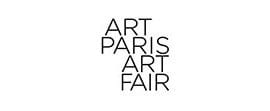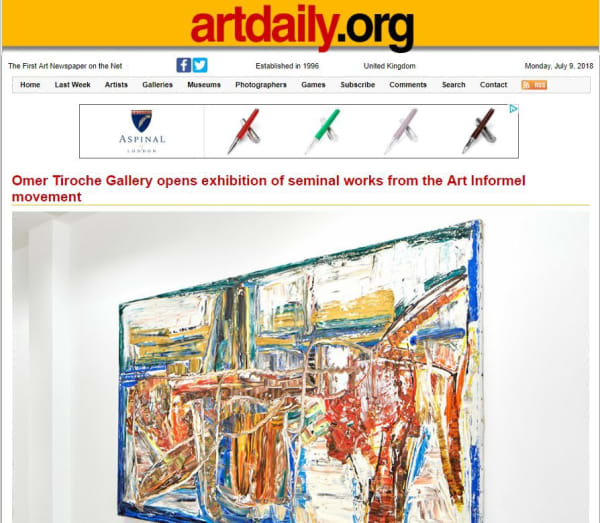Hans Hartung German, 1904-1989
Hans Hartung was born in 1904 in Leipzig, Germany. As one of the most influential post-War Abstract artists, he is acclaimed for his gestural paintings characterised by long, rhythmical, and often scratchy brushstrokes. Hartung was a major figure within movements such as the Lyrical Abstraction and Art Informel. He was also labelled as the ‘Father of Tachsime’.
Hartung enrolled at the Kunstakademie in Düsseldorf in 1924 to study Fine Art. After graduating, he spent a period of travelling and training under Max Doerner in Munich, before settling in Paris where he spent most of his time in isolation, copying artists that he admired. This isolation was broken when he met and married Norwegian painter Anna-Eva Bergman in 1929.
In 1931 Hartung received his first solo show at Kühl Gallery in Dreseden. The following year his father died, and Nazi Germany rejected Hartung and his wife for being ‘degenerate’ artists. He returned to France and not long after divorced from Anna-Eva. As Hartung fell into a bout of depression, his work became even more abstract, which at the time was not favoured amongst the public. Yet it was this disconcerting style of spontaneity, speed and complete freedom that was entirely new to the abstract movement and would later sanction his position of being a leader of European abstraction.
In 1945 Hartung exhibited alongside Miró, Calder, Mondrian and Kandinsky at Galerie Pierre. He continued to push the boundaries of abstraction and used a litany of non-traditional tools to apply his paint, often favouring brooms and spray guns as well as olive branches from trees that grew in his studio garden.
Hartung had his first solo exhibition in Paris in 1947 at Lydia Conti Galerie and by the late 1950s his work was gaining recognition. In 1960 he was awarded the Grand International Prize for Painting at the Venice Biennial and in 1977 became a member of the Académie des Beaux-Arts in Paris. Hartung enjoyed great success with worldwide travelling retrospectives and his works can be found in numerous major international museums, including the MoMa New York, Centre Pompidou, Paris and Palace of Fine Arts, Beijing.
Hans Hartung died at the age of 85 in his home in Antibes, France.
-

Intercontinental Abstraction
11 Oct - 22 Dec 2023 LondonExplore the legacy of abstraction at Omer Tiroche Gallery's Intercontinental Abstraction exhibition. Discover artworks spanning 75 years and 5 continents, featuring renowned artists like Abdoulaye Konaté, Georges Mathieu, Joan Mitchell, and Zao Wou-Ki. Experience the evolution from traditional art to abstraction, driven by societal shifts and artistic freedom. Lyrical Abstraction founder Georges Mathieu's bold response to WWII, Jean Arp's three-dimensional marvels, and the cross-cultural influences in Zao Wou-Ki's work showcase the global impact of abstraction. Immerse yourself in a universal language that captures the complexities of the modern era, leaving a lasting creative legacy. Featured artists: Jean Arp, Anthony Caro, Lucio Fontana, and more.Read more -

Un Art Autre
26 Jun - 31 Aug 2018 LondonOmer Tiroche Gallery is pleased to announce the forthcoming exhibition of Un Art Autre , featuring seminal works by artists who were instrumental in forming the radical avant-garde movement that...Read more







